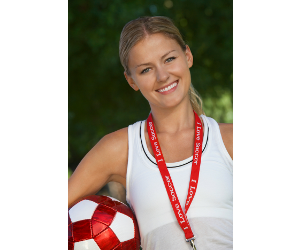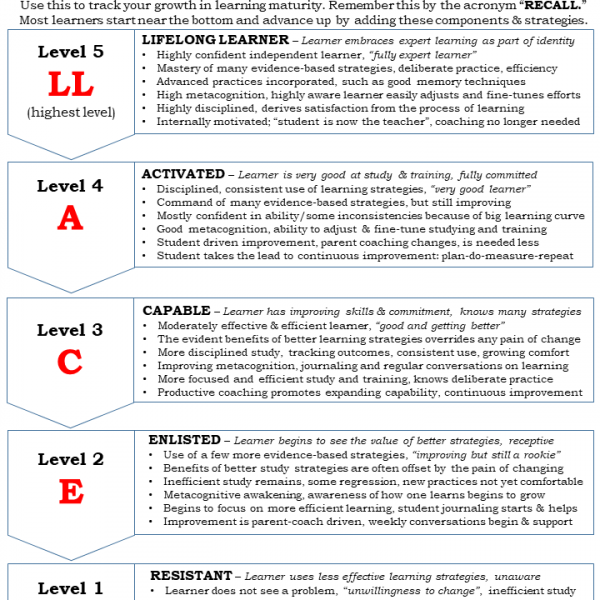
The 4D Coaching Model

Reading time: 8 minutes
Bring out the powerful parent coach in you with this four-step process!
This summarizes the steps of the 4D parent coaching model as presented in the online Pa 10 course. Use this as a step-by-step to guide for improving the learning strategies used by your child. Start with the Discover step and advance to the next levels only when you have accomplished the step results.
DiscoverThis is where you begin collecting information to understand in detail what your child is doing now. Dig in – you are looking at the opportunity to “raise the bar” to build higher level learning skills that will be needed at the college level. What is adequate now may not prepare your child for college. How does your child plan and organize study? What strategies are used and why? What is effective? What needs to improve? There are 3 important activities – get your LSA report, observe and monitor current practices, and have conversations on what your child does and why. Get the facts, do it in a supportive way, while being careful not to project you think there is a “problem.” Avoid wishful thinking or optimistic overrating of your child’s skills. Remember – this is “opportunity finding.” Step Results: Learn – Understand – Know |
DreamAfter you have collected this information, you begin to shift into active coaching mode. This stage is where you work on your child’s motivation and change readiness. You are not ready at this point to introduce changing specific learning strategies. Initiate planned conversations on learning how to learn and ideas like the amazing brain. Jointly explore the positive visions of the future – what wonderful things can happen when your child becomes and expert lifelong learner. But keep in mind, as the parent coach, you do not write the dreams, you help bring them out from your child’s hopes and aspirations. Step Results: Engagement – Motivation – Pave the Way |
DesignThis is where you jointly begin to discuss a plan of action, now that you have readiness in your child to want to improve learning strategies. You can share the LSA report here, and also introduce the Learning Maturity now if you wish. Set some modest goals for the next month to implement a few new or better practices. Mutually agree to a simple plan including a few new strategies, ideas, or habits. Consider putting this on a visible white board where you can easily encourage new efforts. Use your parent coaching to praise and encourage. You are modifying habits so expect some backsliding. Create and follow a simple process -0 you can get more sophisticated later. Start your first SPR meetings and begin to actively discuss and measure success. Strive for incremental improvement – try to get 1% better each week. Step Results: Clarity – Commitment – Accountability |
DestinyThis where you begin to patiently work your plans. Make it a series of weekly and monthly plans to try new ideas. Think small steps. Put on your “self-scientist” hats and have fun! This becomes an ongoing experiment in learning to learn more effectively! As a parent coach you can make it fun. Use the SPR meeting to evaluate and practice continuous improvement. Slowly add more strategies and jointly track your progress – and remember to frequently celebrate successes! As the coach, you point out “evidence indicators” that dreams are becoming a reality. Make sure you reinforce the goal of lifelong learning and college readiness. Remember – you are expanding your child’s capabilities! Step Results: Continuous Improvement – Goal Accomplishment – College Readiness |
(Credit to the original source of the 4D coaching model goes to Appreciative Inquiry)
Put on your Self-Scientist hats and rev it up! Sign up for the Pa 10 course.
Explanation
Why is this 4D model considered a “coaching” tool and not a “parenting” role?
Because when you help your child accomplish something he or she wants to do, you are acting as a coach. Deciding which role is best for each situation makes you a more effective parent. It gives you more power.
This is why we encourage homeschooling parents to think of themselves as having three primary roles – parent, teacher, and coach. Each role has different tools you use to accomplish important things. You can find more on this in our parent resources article on “Three Roles: Parent, Teacher, and Coach.”
For example, when you check the quality of the homework, you are not operating as a coach. You are judging and evaluating the work. That’s a necessary function, of course, but it is not something a coach does. In this capacity, you are operating in your teaching role. When you encourage your child to use smarter evidence-based learning in their homework, that is when you are serving as a coach.
Both roles are important, but they each have a different tone, demeanor, and methods.
Coaching, for the purpose of improving your kid’s learning effectiveness, has two important functions.
First, great coaches spend time analyzing and understanding what is going on first, before they begin providing suggestions on improvement. This is only logical. The knowledge gained from observing and asking questions helps tailor the coaching to the person. In basketball, for example, an effective coach doesn’t just watch the child play the game, they look at how she trains. They study the child’s free throw shooting, defense, and passing. They ask questions to understand why the child does something a certain way. They look for patterns. This is why you have the Discover stage to the 4D model.
Great coaches pay lots of attention to motivation. They know practicing new behaviors can be difficult at first, trying new things can involve failure and setbacks, so they work on maintaining the child’s commitment to goals. This is why you spend time in the Dream stage of 4D, you want to build a strong base for that commitment.
When you and your child transform into self-scientists and begin experiments with new learning methods, you become a team. And you serve as the coach that leads that team effort forward.







